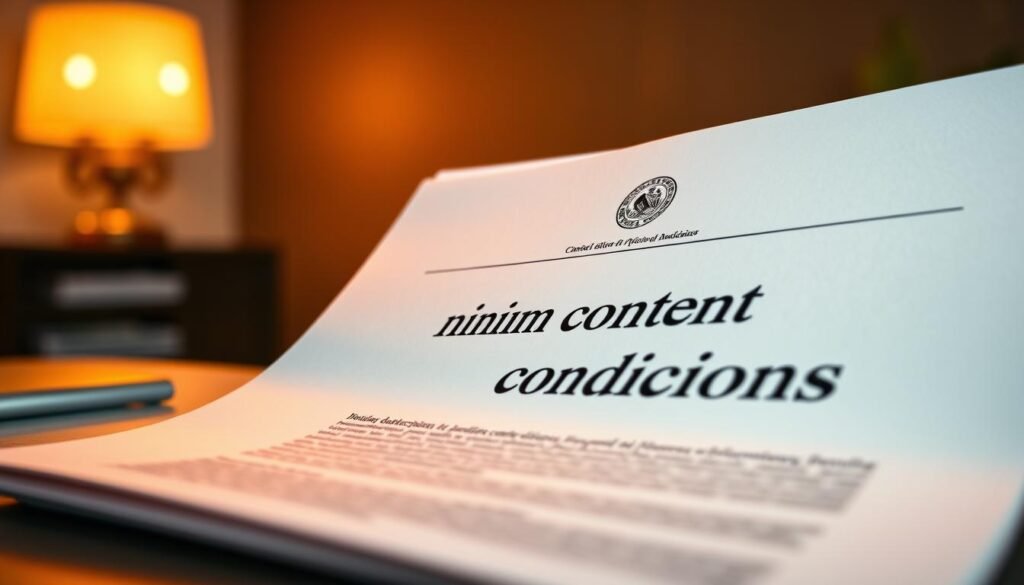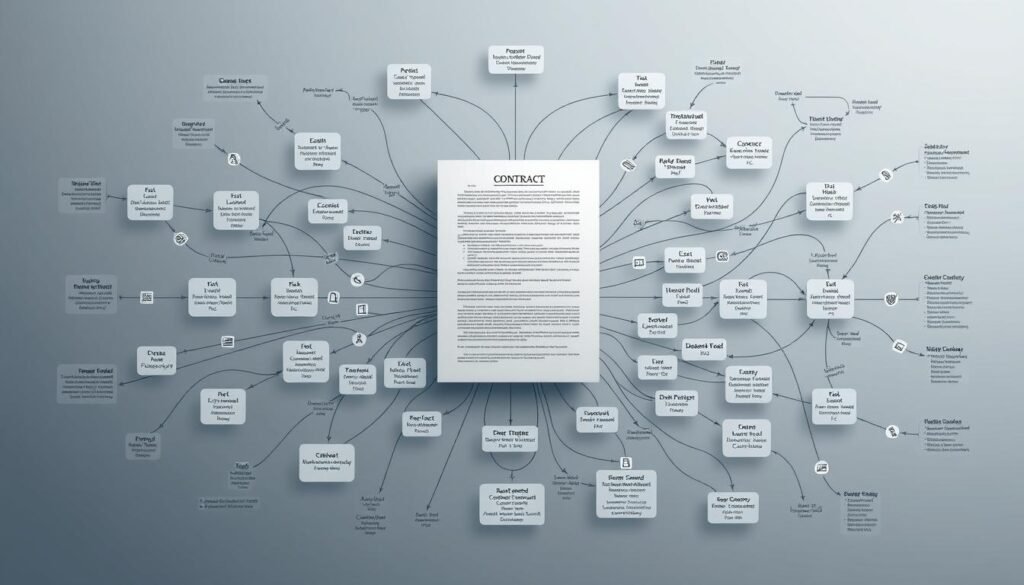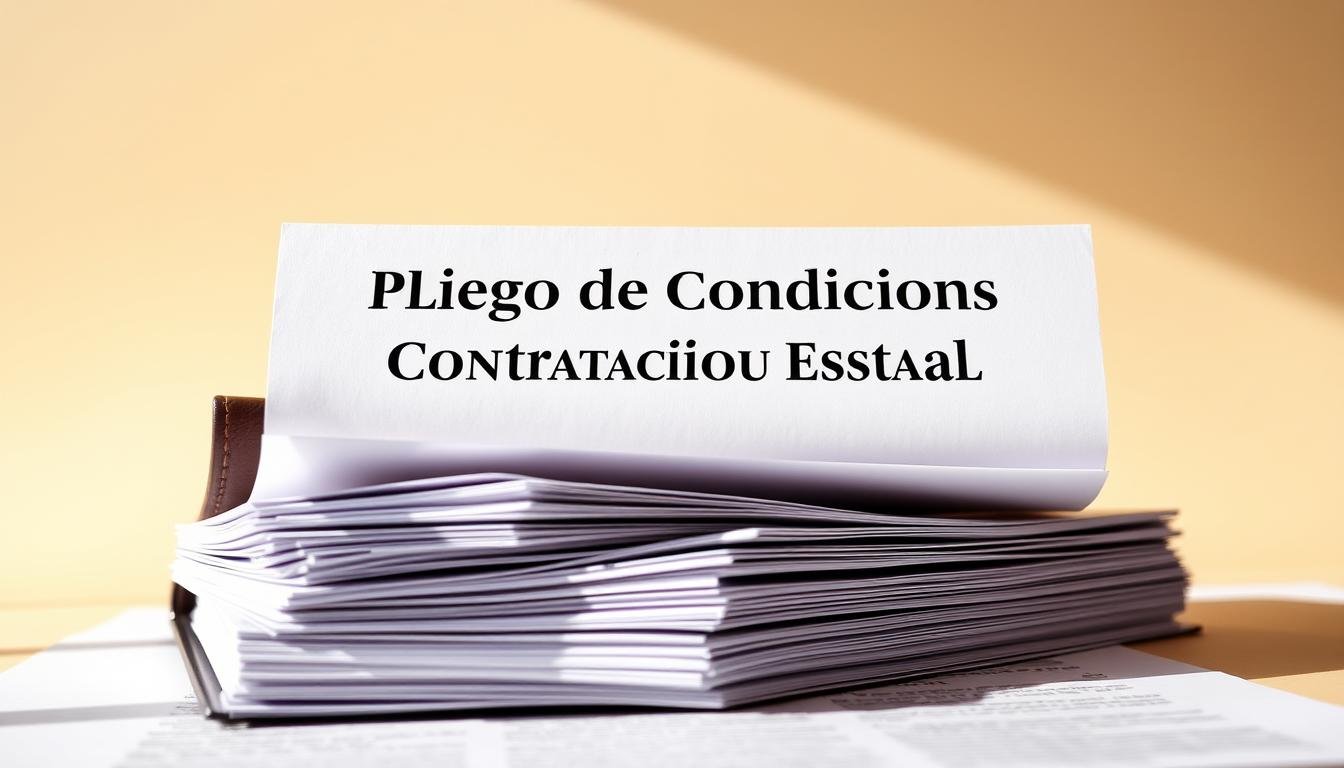Surprising fact: nearly one in four public procurement disputes trace back to unclear tender rules, a gap that often costs time and money.
I guide organizations and professionals through Colombia’s state procurement rules and sanctioning processes. I help draft, audit, and defend tender documents so entities and bidders work from the same clear playbook.
Think of the document as an acto that becomes the law of the contract during the selection and execution phases.
I translate complex legal mandates—Ley 80/1993, Ley 1150/2007, Ley 1882/2018 and DUR 1082/2015—into practical checklists. My work reduces risk by spotting biased rules, designing defensible evaluation models, and ensuring fair selección for all oferentes.
Read on for a hands-on playbook that covers estudios previos, draft pliegos, adendas timing, audiencia procedures, and award steps.
Key Takeaways
- I treat the tender document as the contract’s rulebook to prevent disputes.
- I provide drafting, auditing, and defense services for compliant contenido.
- My approach aligns procesos with transparency and objective selección.
- Early risk controls cut sanction exposure and boost procurement outcomes.
- The guide blends legal orientation with operational checklists for Colombia.
Why this ultimate guide matters now in Colombia’s state contracting landscape
Uniform tender templates now shape competition across Colombia, and knowing how to apply them avoids costly disputes.
I work with entidades estatales and bidders to translate Ley 1882/2018’s pliegos condiciones tipo into usable rules. These templates reduce discretion and raise predictability for every proceso selección.
In practice, clearer condiciones curb sanctioning risk. Better-drafted terms protect the administración and suppliers by creating objective selection paths that withstand audits and challenges.
Practical drafting choices—risk matrices, tie-breakers, adenda windows, and evaluation formulas—flow from macro reforms to on‑the‑ground design. I align each clause with the governing principio of transparency and equality.
Well-timed procesos lower the chance of desertion, nulidades, or award challenges. I provide the documentation trails and compliance checks needed to defend a contrato during investigations.
I serve as a bridge between legal doctrine and execution, so teams can run selection exercises that are fair, efficient, and resilient to scrutiny.
Understanding the pliego de condiciones as an acto administrativo and “law of the contract”
I map how the draft rules become a binding administrative instrument from publication through execution. I treat the document as an acto administrativo that binds both the entidad estatal and oferentes before award.
Binding effects
- I explain how rules apply at pre-award, at celebración contrato, and during contract life.
- I show that clarifications and adendas join the text and alter condiciones used in evaluation and enforcement.
- I stress that ambiguities are interpreted against the administración, so precision matters.
I map obligaciones and derechos from the pliego onto the draft contrato to prevent mismatch at celebración contrato. I advise entidades on predictable reglas and coach bidders to spot limits and opportunities inside the acto administrativo.
I train evaluators to apply condiciones consistently and document decisions so pre-contractual acts remain connected and defensible. When illegal clauses threaten selection, I guide remedies and jurisdictional challenges rooted in principles of transparency and equal selección.
Legal backbone: Ley 80 de 1993, Ley 1150 de 2007, Ley 1882 de 2018, and DUR 1082 de 2015
I convert legal texts into practical workflows that help entities run transparent and objective selection procedures.
From principles to procedure: transparency, equality, and selección objetiva
Ley 1993 (Ley 80/1993) sets the core principios of fairness, transparency, and equality that govern every procurement proceso.
I map those principios into simple rules, templates, and checklists that staff can apply daily.
How Ley 1150/2007 reshaped habilitating vs. scoring criteria
Ley 1150 2007 separated requisitos habilitantes from scoring factors.
I design forms that make verification binary and keep scoring formulas auditable.
This split improves decision clarity and reduces grounds for challenge.
Pliegos tipo for public works after Ley 1882/2018
DUR 1082/2015 consolidates minimum content and steps. Ley 1882 pushed standardized pliegos for obra pública, including a two-envelope model and random award methods for economic offers.
- I translate each ley into internal reglas, submission forms, and risk matrices.
- I build templates that operationalize habilitantes vs. scoring to ensure selección objetiva.
- I flag common overreach and show corrective wording to lower sanction risk.
| Law | Main Effect | Practical Tool I Provide |
|---|---|---|
| Ley 80 / 1993 | Principles backbone: fairness, transparency | Principles checklist and audit log |
| Ley 1150 / 2007 | Habilitantes vs. scoring split | Verification forms and scoring matrix |
| DUR 1082 / 2015 | Minimum contenido and procedures | Minimum-content template and timeline |
| Ley 1882 / 2018 | Standard pliegos and two-envelope method | Two-envelope workflow and randomization plan |
Minimum content of the pliego under Decree 1510/2013 and DUR 1082/2015

I ensure the tender’s required items link to the contract so bidders can price and perform with certainty. My work focuses on clear contenido that withstands review and minimizes sanction risk.
Object, scope, technical specs, and contractual terms
I define the objeto and scope with precise technical specs and measurable deliverables. This reduces interpretation gaps and helps the administración and bidders align expectations.
Evaluation rules, tie-breakers, and risk allocation
I separate habilitating from scoring rules and add objective tie-breakers. I also draft risk matrices and hearing points that assign liabilities and mitigation duties transparently.
Guarantees, timelines, adendas window, and supervision/interventoría
I set proportional guarantees and realistic timelines. I program the adendas window and respect the three-business-day buffer before closing.
- I walk through each minimum content item to meet DUR 1082 standards.
- I draft supervision terms that define roles, deliverables, and oversight.
- I specify rejection causes tied to legal grounds to limit discretionary rulings.
- I include trade agreement conditions when relevant and keep document controls traceable.
Need deeper review? I audit and redesign minimum content and advise during sanctioning reviews tied to gaps or illegal reglas. Learn more on my practice page: pliegos condiciones guide.
From estudios previos to proceso de selección: planning that drives compliance
My work connects preliminary research to a selection stage that bidders can trust and auditors can defend. I center planeación on clear studies so the administration and the entity act from the same facts.
Publishing estudios previos and the draft terms
I recommend publishing studies and a draft terms document early. This gives the market time to respond and reduces later disputes. Clear communication of scope, budget, and risk improves participation and speeds selection.
Revoking or adjusting when studies materially change
When studies or technical findings shift, I assess whether revocation of the opening protects the public interest. Temporary suspension can cure procedural defects without voiding the whole process.
- I map planeación steps to create audit-ready files from studies through award.
- I integrate RUP records and internal data to lower documentary burdens in evaluation.
- I define clear rules on subsanability and lawful causes for rejection.
I advise teams on legal risks and mitigation if material changes are ignored. That guidance helps preserve legality and defend the process in sanctioning reviews.
pliego de condiciones contratación estatal: what it includes and why it’s decisive

I draft tender rules that steer market offers toward fair, predictable competition in Colombian public procurement.
Why the document matters: it sets the legal and technical bases for every offer and, where conflict arises, often prevails over the contrato. Clear contenido prevents gaps that lead to nullities or sanctions.
I structure habilitantes separately from scoring to protect equality and selección objetiva. This split makes verification binary, keeps scoring auditable, and avoids discriminatory criterios.
My drafting goal balances completeness with efficiency. I avoid overbearing requirements that reduce participation while ensuring mandatory items tie to performance and supervision tasks.
- I design reglas that shape pricing and risk allocation so bidders price realistically.
- I include enforcement-ready clauses for interventoría and supervision during execution.
- I run audits to detect hidden bias or inconsistent normas before publication.
When clauses are challenged, I defend processes by showing alignment with statutory principios and documentary trails. A decisive pliegos condiciones reduces objections, desertion, and sanctioning exposure while improving award defensibility.
Selection modalities and when they apply: licitación, selección abreviada, concurso de méritos, and direct contracting
I help entities pick the correct selection route so procurement matches budget, scope, and market reality. Choosing the right modality reduces challenge risk and keeps the proceso defensible under law.
When licitación applies
For public works, licitación is usually the rule. When the budget exceeds thresholds set in ley 1150 and related rules, licitación public is required. Public works often use a two-envelope model and a random method at award under Ley 1882.
Aligning modality to needs and thresholds
I map each modality to legal grounds and use cases so the entidad can justify its choice. I tie budget limits to SMLMV and the scope of the proyecto to avoid misclassification.
- I design evaluation models that match the chosen modalidad’s legal constraints and protect economic offers with two-envelope mechanics.
- I set documentation standards that substantiate modality selection for audits by entidades estatales.
- I caution against overusing direct contracting and give controls when it is the only lawful option.
- I define conditions to preserve competition in selección abreviada and concurso de méritos and prevent procedural attacks.
Practical outcome: I deliver checklists tied to SMLMV and scope so the proceso selección stands up to review and minimizes sanction exposure.
Evaluation architecture: requisitos habilitantes vs. scoring and objective selection
I craft clear verification lists and scoring grids that cut documentary redundancy and protect decisions in audits.
Enabling checks
I set binary checks for legal capacity, financial ratios, and relevant experience. These requisitos are pass/fail so committees verify quickly and record results.
Technical and economic scoring
I design weighted criteria for technical merit, methodology, personnel, and economic formulas. This balances cost and quality to identify best value for selección.
RUP and reduced documentary burdens
I use RUP data and internal registros to avoid repeated uploads. Subsanability rules are clear so oferentes can fix minor gaps without exclusion.
- I calibrate thresholds to the contract’s objeto and risk.
- I test reglas to prevent bias and ensure objective aplicación.
- I prepare committees with scripts, matrices, and documentation trails.
- I create response templates for bidder observations and defenses.
Note: I apply Ley 1150 2007 principles to keep habilitantes verification separate from scoring, helping the administración defend the proceso and its outcomes.
Modifications and adendas: timing, limits, and integrity of the process
I manage the lifecycle of amendments to keep every tender proceso lawful and auditable. My goal is to allow necessary fixes while protecting competition and avoiding sanction risk under Ley 1474/2011 and DUR 1082/2015.
Material vs. formal changes: I distinguish quick formal fixes from material edits that alter economic terms or affect selection. Formal fixes correct typos or minor clarifications and rarely require timeline shifts.
Material changes before closure
When a change is material, I treat it as a new event in the procedimiento. I extend deadlines and republish the revised pliego so bidders can adapt without prejudice.
Deadline rules and the three‑day buffer
I enforce a strict internal calendar that respects the three business day buffer before closing. No adenda is issued inside that window. This protects the administración and preserves adjudicación validity.
Intangibility after bid closing
After bid closing the text becomes an acto administrativo and is largely intangible. Post‑closing edits are prohibited except for clerical corrections that do not affect offers.
- I publish clear adenda templates and version control every change for audit readiness.
- I align Q&A windows so clarifications do not turn into last‑minute material edits.
- I brief teams on risks of late changes, including annulment or sanctions, and plan post‑mortems to improve future practice.
Risk allocation and adjudication methodologies in public works

I build clear risk frameworks so teams price public works with realistic exposure and avoid surprise claims. I embed risk allocation in the document so responsibilities and mitigations are visible from the start.
Risk hearings and matrices
Risk hearings, matrices, and mitigation duties
I draft transparent risk matrices that allocate hazards to specific parties and link them to mitigation duties. I plan hearings to test assumptions and to record who accepts mitigation tasks.
- I draft risk matrices that allocate and mitigate risks transparently.
- I link risk allocation to guarantees and supervision requirements to secure performance under the contrato.
- I document mitigation timelines so pricing reflects real exposure and claims fall.
Economic offer envelopes, random methods, and award hearings
I design sobre 1 and sobre 2 contenido lists that are unambiguous. For licitación under Ley 1882/2018, I define and test the random method for economic evaluation and script award hearings to follow the reglas exactly.
- I ensure economic formulae and tie-breakers are stated and reproducible.
- I train teams to manage sealed offers securely and prepare adjudication files that withstand legal scrutiny.
- I prepare the proceso and selection records so an entidad estatal can defend an award in sanctioning reviews.
Prohibited and ineffective clauses: how to avoid legal pitfalls
I spot unlawful clauses early and craft objective replacements so awards hold up under review. I remove hidden bias that breaches principios and the duty of igualdad in every proceso. My work focuses on clear reglas and enforceable condiciones to protect the acto administrativo.
Brand exclusivities, discriminatory criteria, and regional bias
Clauses naming brands or preferring regions skew competition and breach selección rules. I scrub pliegos to delete exclusivities and replace them with neutral technical specs.
Impossible obligations, exonerations of liability, and unlimited offers
I flag clauses that demand impossible performance or waive claims. I remove exonerations that shift all risk to bidders and rewrite obligations so they meet market norms.
Interpretation against the administration when clauses are ambiguous
Ambiguous condiciones are read contra administración and may be ineffective de pleno derecho. I rewrite unclear text and document choices so a challenge cannot void the proceso.
- I list and correct prohibited clauses in draft pliego condiciones.
- I replace subjective tests with measurable, objective criteria.
- I prepare defense strategies for sanctioning cases tied to flawed pliegos.
Conexity with pre‑contractual acts: opening, evaluation, award, and desertion

I describe how careful recordkeeping at each stage preserves an entidad’s ability to defend an adjudicación and to protect service continuity.
How the acts connect
Opening notices, evaluation reports and the final award form a chain that derives force from the acto administrativo. Each record must tie back to the issued condiciones so courts can trace decision logic.
Challenging an award for illegal clauses
I identify grounds to attack an adjudicación when clauses are unlawful or bias the selección. I prepare exception of illegality arguments that may proceed even if the initial tender has not been declared null.
Revocation, suspension, and procedural remedies
I advise when revocation of the opening protects the public interest or when suspension can cure defects without harming services. I map remedies across administrative and judicial stages and coordinate timelines for preservation of rights.
- I link documentation to each pre‑contractual act for a coherent file.
- I assess desertion risk and revise condiciones to keep competition alive.
- I craft strategies for both administrative defense and judicial appeals.
- I align remedies with continuity needs and the celebration of the contrato.
For breach response guidance, see my practical notes on how to address breaches in state contracts: address breaches in state contracts.
Transparency and equality in practice: publication, clarity, and non‑discrimination
I open draft terms to market review so oferentes can spot ambiguous rules and suggest fixes. This early publication supports the principio of open access and preserves igualdad in selection.
Draft publication to level the playing field
I design publication plans for draft pliegos condiciones that invite market input. I schedule Q&A windows and publish a shared log so every bidder receives the same information simultaneously.
Clarity duty and subsanability rules
I codify subsanability with precise limits so minor defects can be fixed without exclusion. I set readability checks and enforce plain language to reduce ambiguity and aid cumplimiento.
- I ban formalistic, irrelevant criteria that distort selection.
- I use RUP and internal records to cut documentary burden.
- I train evaluators to treat all oferentes equally and document decisions.
| Practice | Benefit | Audit Evidence |
|---|---|---|
| Publish draft terms early | More competition and fewer objections | Publication log; Q&A record |
| Clear subsanability rules | Reduced wrongful exclusions | Subsanability clauses; correction records |
| Transparent evaluation reports | Faster defenses and fewer sanctions | Evaluation report; observation replies |
| Equal information release | Integrity of the proceso | Timestamped notifications; distribution list |
Result: these steps strengthen the administración’s defense in audits and sanctioning reviews while protecting competitive selection and legal compliance.
Sanctioning processes in Colombia: when pliegos and procedures breach the rules
When tender rules stray from legal standards, investigations often follow and harm project continuity. I help entities and contractors face administrative review and protect awards in Colombia.
Administrative investigations tied to illegal clauses or biased evaluation
Triggers and scope of investigación
Illegal clauses—such as discriminatory specs or blanket exonerations—and biased scoring prompt fast scrutiny. Timing violations in adendas or late changes also trigger formal investigation of the selección process.
Consequences for entities, officials, and contractors
Sanctions and institutional risk
Sanctions can include fines, suspension of procedures, personal fines for officials, and temporary disqualification for contractors. The entidad’s reputation and project continuity are at stake.
Due process, evidence, and defense strategies anchored in the pliego
Defenses, audits, and my advisory role
I provide consulting and advisory services for sanctioning procesos in Colombia. I audit files for due process, build defenses using the issued condiciones and acto records, and prepare responses to oversight bodies.
- I identify investigation triggers and quantify risk exposure.
- I audit evidence, close gaps, and craft remediation plans.
- I train teams on compliant evaluation and record keeping.
- I support entities and contractors throughout the sanctioning lifecycle.
| Trigger | Possible Sanction | Preventive Action |
|---|---|---|
| Biased scoring | Annulment or fines | Audit and revise matrices |
| Illegal clauses | Disciplinary measures | Neutral technical specs |
| Adenda timing breach | Suspension | Strict calendar controls |
Common mistakes I see in pliegos and how I correct them
I often review drafts where scoring criteria do not match the actual object. That misalignment makes selection arbitrary and invites challenges.
Misaligned criteria with the contract objeto
I realign technical scores to the real execution risks. I test weightings with pilot evaluations and market checks so the best offer wins on merit.
Overbroad habilitating demands that limit competition
I narrow habilitantes to what is necessary and verifiable. I remove formalistic demands that exclude qualified oferentes and replace them with measurable requisitos.
Practical corrective strategies I use:
- I rewrite ambiguous reglas so clauses are not read against the administration.
- I leverage RUP and internal records to cut documentary burdens for oferentes.
- I calibrate financial thresholds to market reality and design lawful, fair tie‑breakers.
- I document every change so corrections survive sanctioning review and support cumplimiento.
| Common Mistake | Correction | Audit Evidence |
|---|---|---|
| Criteria misaligned with objeto | Realign scoring; pilot test | Scoring rationale; pilot report |
| Overbroad habilitantes | Narrow to verifiable requirements | Revised habilitantes list; verification forms |
| Ambiguous reglas | Rewrite for clarity and legal soundness | Redline history; legal memo |
| Excessive documentary burdens | Use RUP records and simplified evidence | RUP extraction logs; reduced checklist |
How my consulting and advisory services support contracting and sanctioning processes
I offer strategic consulting that aligns tender content, evaluation models, and risk controls with current Colombian norms. I advise both entidades and contractors on legal design and defensive preparation during a proceso and in sanctioning reviews.
Designing compliant conditions, evaluation models, and risk maps
I build minimum content aligned with DUR 1082/2015, separate habilitantes from scoring under Ley 1150/2007, and apply pliegos tipo from Ley 1882/2018 when required.
Practical outputs include:
- Draft and review tender text against legal checklists and best practices.
- Evaluation models with transparent weights and reproducible methods.
- Risk maps, proportional guarantees, and dashboards to monitor cumplimiento.
Defending and auditing procesos in investigations and challenges
I prepare full defense files for investigations, manage adenda calendars to protect the acto administrativo, and audit legacy procesos to fix vulnerabilities.
Services I provide: committee training, communications control, bidder support for lawful challenges, and ongoing advisory to entidades and contractors across Colombia.
Conclusion
I summarise how clear drafting and strict timing turn risk into predictable outcomes for selection and award.
I treat the pliego as an acto administrativo and the law of the contrato; clear condiciones and proper adendas timing reduce disputes and safeguard cumplimiento.
Well‑scoped requisitos and neutral rules protect igualdad and the principios of fair selección. Removing prohibited clauses keeps competition open and defensible under ley.
I plan from estudios previos through award, document every paso, and keep audit files ready to support defenses in sanctioning procesos. I offer end‑to‑end advisory to entidades and bidders so processes deliver value and legal certainty.
For practical reason, adopt structured templates, risk controls, and reproducible records to build market trust and better procurement results.

